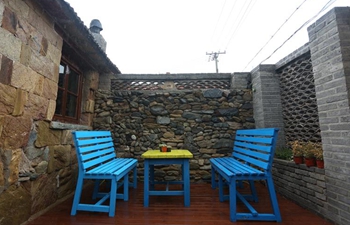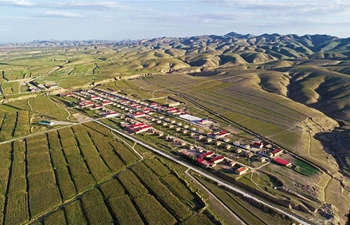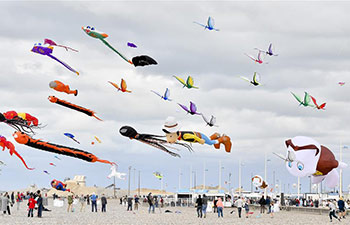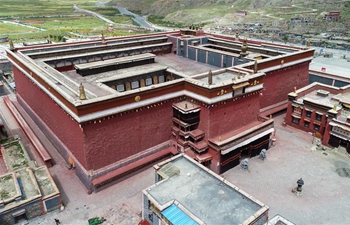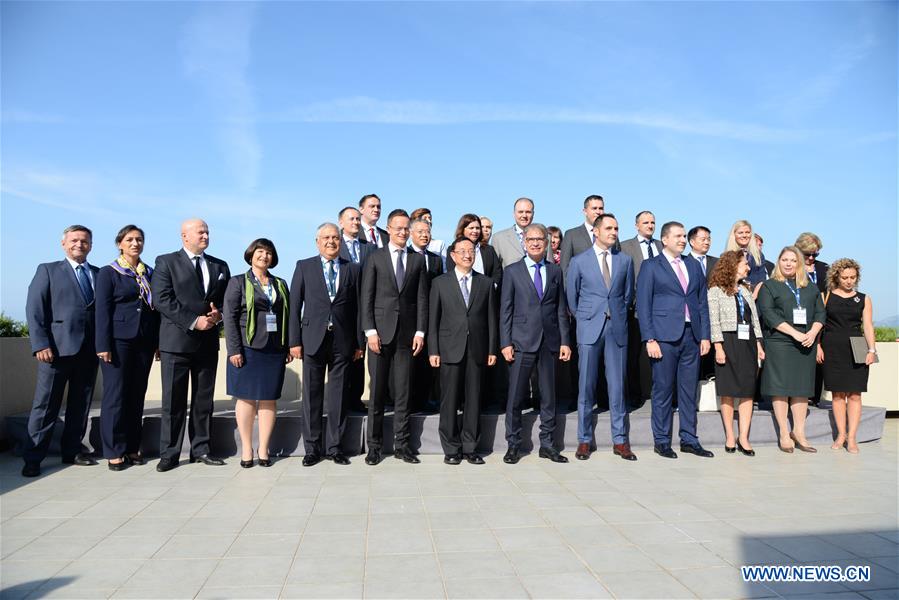
Tourist ministers and officials from China and 16 Central and Eastern European Countries (CEEC) pose for a group photo before the 4th high-level meeting on tourism cooperation in Dubrovnik, Croatia, on Sept. 19, 2018. Officials from China and 16 Central and Eastern European Countries (CEEC) agreed to further develop tourism partnership during the 4th high-level meeting on tourism cooperation in southern Croatian city Dubrovnik on Wednesday. (Xinhua/Gao Lei)
DUBROVNIK, Croatia, Sept. 19 (Xinhua) -- Officials from China and 16 Central and Eastern European Countries (CEEC) agreed to further develop tourism partnership during the 4th high-level meeting on tourism cooperation in southern Croatian city Dubrovnik on Wednesday.
As an essential part of the "16+1" cooperative mechanism, the three-day meeting which officially kicked off on Tuesday was attended by tourist ministers and officials from all participating countries.
The Central and Eastern European Countries reported growing inflow of Chinese tourists. According to Croatian Tourist Minister Gari Cappelli, from January to September this year, 153,000 Chinese tourists have already visited the country, compared with to the total count of 160,000 for the whole year of 2017, when the number of Chinese tourists increased 56 percent than previous year.
"Tourism connects people, reduces misunderstandings and has an impact on billions of people in China and Europe. We are glad that we have built the foundations of trust," Cappelli said.
Chinese Minister of Culture and Tourism, Luo Shugang, said that the "16+1" platform has vastly progressed in the last five years.
"In the future, we have to put more emphasis on establishing direct flights in order to further stimulate the mutual exchange of tourist visits, which has already reached 1.7 million, and strengthen the tourism cooperation," Luo said.
He also suggested that all parties should expand the scope of tourism cooperation, invest more resources in the industry and realize more frequent people-to-people exchanges.
Addressing the meeting, Peter Szijjarto, Hungarian Minister of Foreign Affairs and Trade, said, "Chinese tourists are the ones who spend the most when they travel."
Since tourism revenues play an important role in this region's gross domestic product (GDP), "we understand that it is extremely important to increase the attractiveness of this region for Chinese tourists," Szijjarto said.
Topics high on the agenda of the meeting include the necessity of introducing direct flights from China to the region, creation of joint tourism packages, further simplifying visa application procedures and positive investment climate that would be a bridge for the successful future cooperation of counties' initiatives. Examples of Czech Republic, Serbia, Poland and Bosnia and Herzegovina have proved that direct air links or visa-free policies contribute dramatically to the increase of mutual tourists flow.



